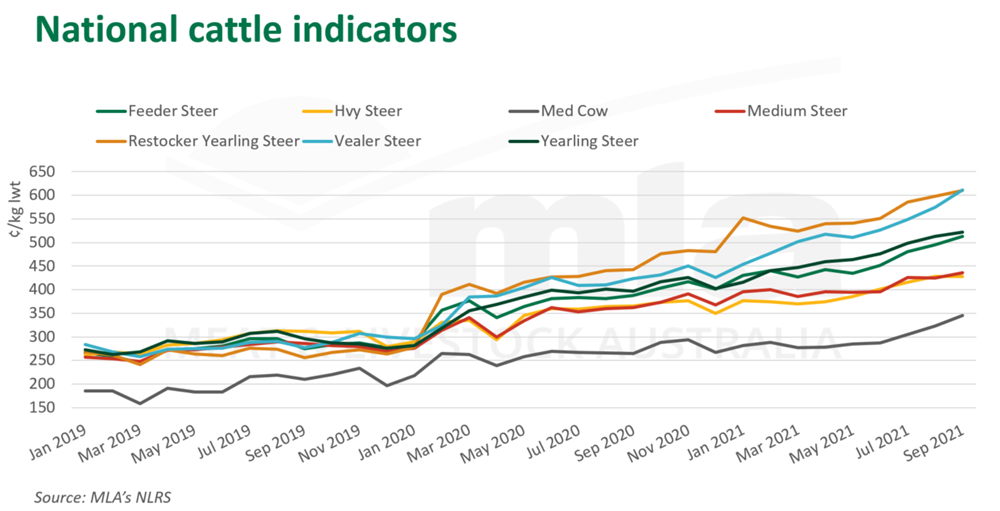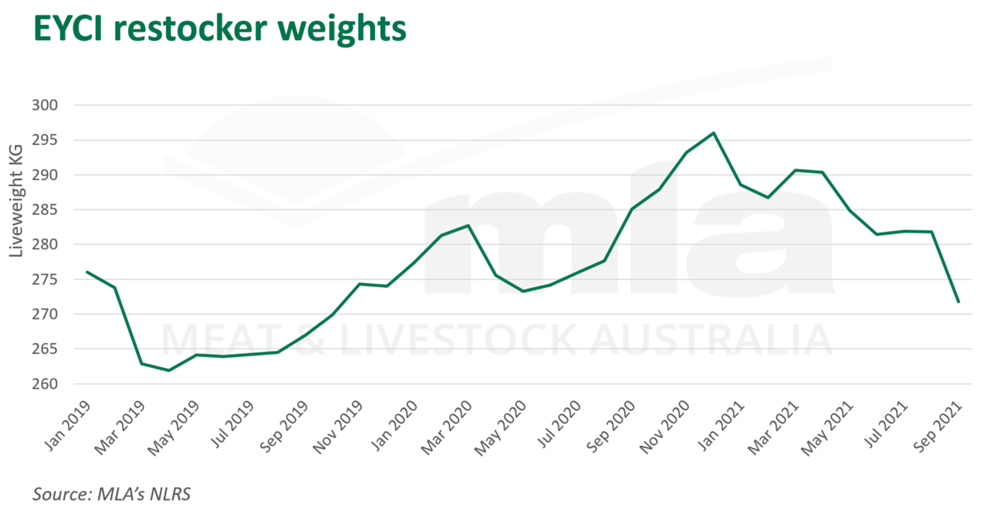Cattle market stronger than ever
17 September 2021
Key points:
- Restockers are seeking lighter cattle in 2021
- Spring presents an even greater opportunity to add weight to cattle
- Feedlots continue to underpin supply, highlighted by continued strength of the Feeder Steer Indicator
The domestic cattle market is as strong as it’s ever been. Prices all along the supply chain have risen, with multiple saleyard indicators hitting new records. The Eastern Young Cattle Indicator (EYCI) and Western Young Cattle Indicator (WYCI) both achieved 1,029¢/kg carcase weight (cwt) this week, just shy of previous records set.
Some of the other high-performing indicators include:
- National Feeder Steer: 523.50¢/kg lwt on 15 September
- National Medium Cow: 352.50¢/kg lwt on 14 September
- National Heavy Steer: 451.75¢/kg lwt on 9 September.

Beyond the saleyard, over-the-hooks prices also reached new highs, highlighting processors’ abilities to pay a little more, with Queensland and NSW prices increasing significantly since the week prior.
The impressive results across all categories are reflective of the confidence in the market. This comes as Australia’s seasonal conditions continue to improve, along with the fact that global beef supply is low and demand for product continues to improve from key markets. These factors are helping to support an already strong baseline of cattle prices.
The volatile young cattle weight trend has driven restockers to pursue lighter animals in 2021, with average restocker weights declining by 24kg, from 296kg to 272kg, since the start of the year. Last year, the average restocker weight for EYCI cattle jumped by the same margin. Interestingly, the common trend for both years is sustained good seasonal conditions.
Given how high the market is, producers are evidently seeking lighter cattle in order to capitalise on the feed in front of them and attain a margin by reducing the initial investment on cattle. The constant upward trend of the market has proved to be beneficial for producers willing to trade. Consequently, it could be argued that the lower weights have triggered higher prices paid per kg, helping to assist the strong indicator performance.

Looking ahead
Forecast rainfall through spring and warmer temperatures mean ideal weights gain conditions for cattle. Restockers are likely to seek lighter cattle, resulting in a continued offload of young cattle by producers to cash in on this demand.
On the international front, demand for Australian product should remain strong as significant supply shortages out of South America continue and global foodservice activity ramps up, helping to fuel beef prices.


